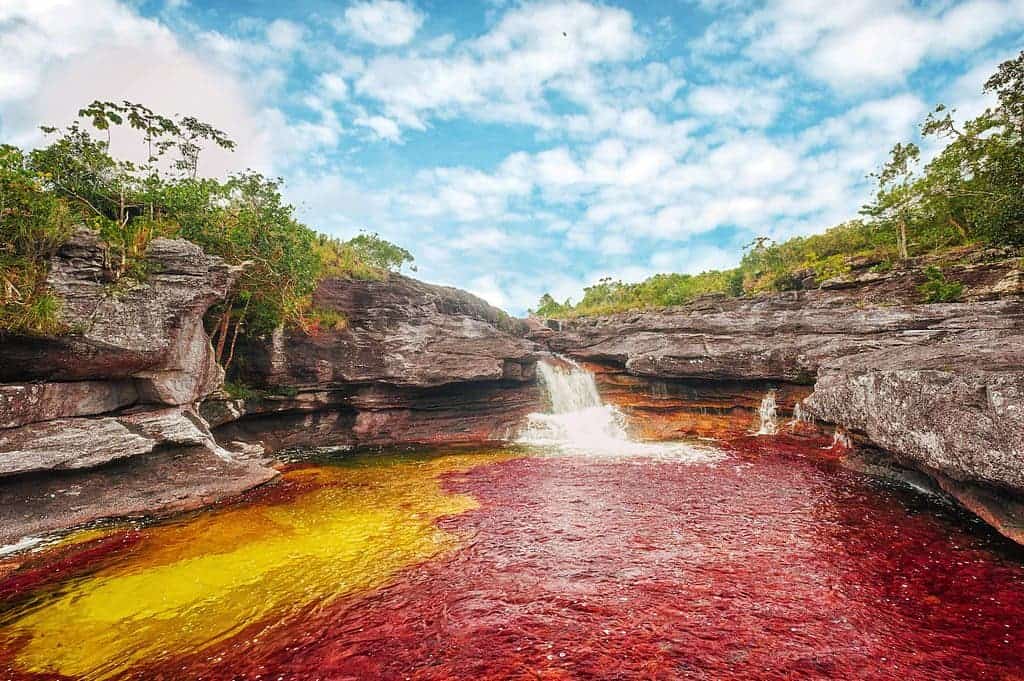Caño Cristales is a river located in Northern Columbia, with a length of almost 100 km and a width of under 20 meters. If you look at it, you’d be tempted to think this is some sort of illusion or photographic trick, but you’d be wrong.
It’s quite remote, and you can get there only by foot, horses and donkeys, but that doesn’t stop tourists from flooding in. There were so many of them that visiting it was actually forbidden for several years. Now it’s open, but within reasonable limits. The river is a rainbow of colors, changing from corner to corner.
The hard rocks which make most of the bottom of the river are covered with moss, which most of the year have a dull green or brown colour. In the rainy season the water is too deep for the colours to bloom, and in the dry season there’s just not enough water to support all the moss.
However, there is a window during these seasons when the water level is just right, and the dazzling display of colours appears to delight the eye.













